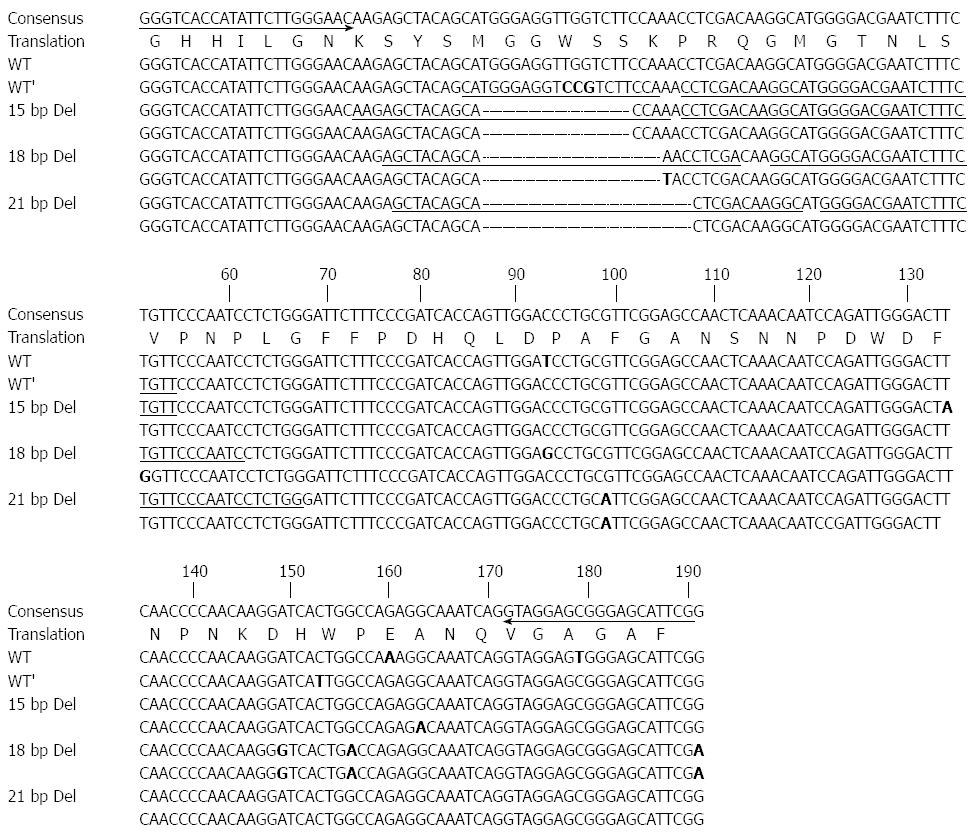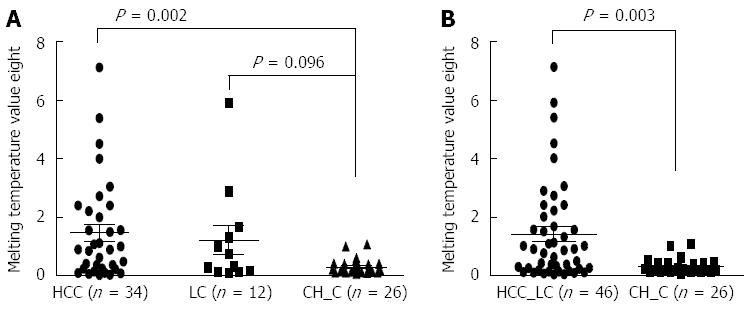Copyright
©The Author(s) 2015.
World J Gastroenterol. Apr 28, 2015; 21(16): 5039-5048
Published online Apr 28, 2015. doi: 10.3748/wjg.v21.i16.5039
Published online Apr 28, 2015. doi: 10.3748/wjg.v21.i16.5039
Figure 1 Primer and probe positions designed to detect hepatitis B virus pre-S1 gene deletion sequence variants at the start codon of preS1.
Four types of probes for detection of wild type and three deletion types (15-bp, 18-bp and 21-bp deletions) were used to screen the deletion variants. The arrows indicate the primer positions. The underlining indicates the probe positions. The numbers indicate the nucleotide position on the S gene sequence. The boldface bases indicate different bases from those of the consensus sequence. The amino acid sequence is shown as the one-letter amino acid symbol. WT: Wild type; WT’: W4P mutation; 15, 18, 21bp Del: 15, 18, 21 base pair deletion.
Figure 2 Real-time polymerase chain reaction melting curve analyses that identified the hepatitis B virus preS1 deletion variants (WT, 15-bp del, 18-bp del, or 21-bp del) with deletions at the start codon of preS1 with cloned positive control plasmids and non-template controls.
The Tms were determined using duplicate runs and are presented as average and standard deviation values. The Y-axis is the negative differential of fluorescence over temperature at the detection channel and is normalized using background fluorescence at channel 530. PCR: Polymerase chain reaction; HBV: Hepatitis B virus; WT: Wild type; 15, 18, 21-bp del: 15, 18, 21-base pair deletion; HCC: Hepatocellular carcinoma; LC: Liver cirrhosis; CH: Chronic hepatitis; C: Carrier.
Figure 3 Quantification of deletion variants vs wild type virus by melting temperature height values in 72 cohort I subjects with deletions, according to their clinical statuses.
The melting temperature height values of the deletion probe of each subject were normalized to the wild type probe. A: Comparison of the melting temperature height values between the subjects with hepatocellular carcinoma (HCC), liver cirrhosis (LC), and mild diseases [chronic hepatitis (CH) and carrier (C)]; B: Comparison of the melting temperature height values between subjects with severe diseases (HCC and LC) and mild disease (CH and C).
Figure 4 Detection limits of real-time polymerase chain reaction for detection of deletion variants mixed with various concentration of wild type hepatitis B virus DNA.
Control plasmid DNA was used for this experiment. Wild: Wild type; 15, 18, 21-bp del: 15, 18, 21-base pair deletion.
- Citation: Lee SA, Kim KJ, Kim H, Choi WH, Won YS, Kim BJ. Hepatitis B virus preS1 deletion is related to viral replication increase and disease progression. World J Gastroenterol 2015; 21(16): 5039-5048
- URL: https://www.wjgnet.com/1007-9327/full/v21/i16/5039.htm
- DOI: https://dx.doi.org/10.3748/wjg.v21.i16.5039












